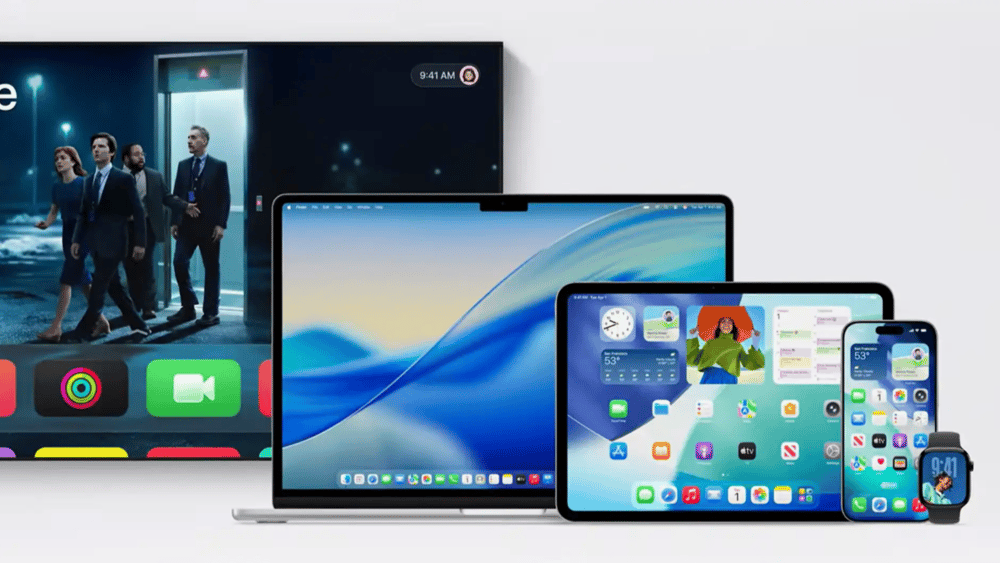Apple Unveils 'Liquid Glass' UI Across iOS 26, macOS Tahoe 26, and More
Apple Inc. $AAPL has officially revealed its next-generation software design paradigm, introducing a material it calls Liquid Glass. This new design system will debut across iOS 26, iPadOS 26, macOS Tahoe 26, watchOS 26, and tvOS 261, creating a harmonized but distinctive user experience across its ecosystem.
The announcement marks the first time Apple has released a unified design update across all of its platforms in a single generation. More than a cosmetic refresh, this move represents a broader strategic evolution in Apple’s user interface (UI) philosophy, blending form and function with immersive dynamic responsiveness.
From Skeuomorphism to Liquid Glass: The Strategic Shift in UI Design
Liquid Glass is not merely a stylistic enhancement—it’s a shift in interaction design strategy. Apple describes it as a semi-transparent, refractive material that responds in real time to environmental light and motion, delivering a tactile, adaptive user interface experience.
This design upgrade serves multiple purposes:
Enhanced Visual Hierarchy: Liquid Glass visually emphasizes foreground content by diffusing background noise. App controls, widgets, and navigation elements now appear more intuitive and lively, improving usability without sacrificing aesthetic minimalism.
Cross-Platform Cohesion: Apple has historically balanced consistency and uniqueness across platforms. Liquid Glass tightens integration between devices while retaining platform-specific identities—a crucial move in retaining ecosystem loyalty.
Competitive Differentiation: Amid growing UX innovation from Microsoft $MSFT, Google $GOOGL, and Samsung $005930.KS, this design reaffirms Apple’s brand DNA rooted in visual excellence and emotional appeal.

🔹 Quick Facts:
🧊 Liquid Glass: A new UI material with semi-transparency, dynamic light response, and depth effects.
📱 Platforms covered: iOS 26, iPadOS 26, macOS Tahoe 26, watchOS 26, tvOS 261.
🧭 Functionality: Improves navigation, control clarity, and emotional resonance with users.
🔄 Consistency: First time a unified design spans all major Apple platforms.
⚙️ Purpose: To enhance user focus, reduce cognitive load, and establish design leadership.
Market and Industry Response: Visual Strategy as a Business Lever
Though design is often considered a subjective area, Apple’s software interface upgrades are historically tied to broader hardware and ecosystem strategies. Analysts view the Liquid Glass design as part of a multi-layered product cycle refresh, potentially tied to the upcoming A18 chip architecture and next-gen Apple Vision product lines.
From a branding and investor perspective, Apple is reaffirming its premium positioning through innovation not only in silicon and services, but also in the emotional texture of product interaction. Enhanced UX can yield increased retention, reduced churn, and higher engagement across services like iCloud+, Apple Music, and Apple TV+.

🔑 Key Takeaways:
Apple repositions its design leadership with Liquid Glass as a tactile, responsive UI framework.
Visual language unification supports Apple’s ecosystem lock-in strategy.
Analysts tie the UX evolution to upcoming device cycles and AI-driven contextual interfaces.
Competitors may respond with UI modernization across Android, Windows, and Galaxy platforms.
Investor sentiment is cautiously optimistic, viewing the update as additive to user loyalty metrics.
Apple’s Liquid Glass is More Than Visual—It’s Strategic
The introduction of Liquid Glass represents more than a surface-level design upgrade. It reflects Apple’s enduring philosophy of human-centered technology—marrying technical innovation with emotional clarity. In an era where generative AI, edge computing, and cross-device workflows are redefining user expectations, Apple’s design leadership signals its continued relevance not only in hardware and software, but in user perception and digital trust.
As Apple stock continues to perform steadily on the NASDAQ, the design overhaul could act as a silent catalyst for ecosystem reinforcement and long-term user value creation.















Comments